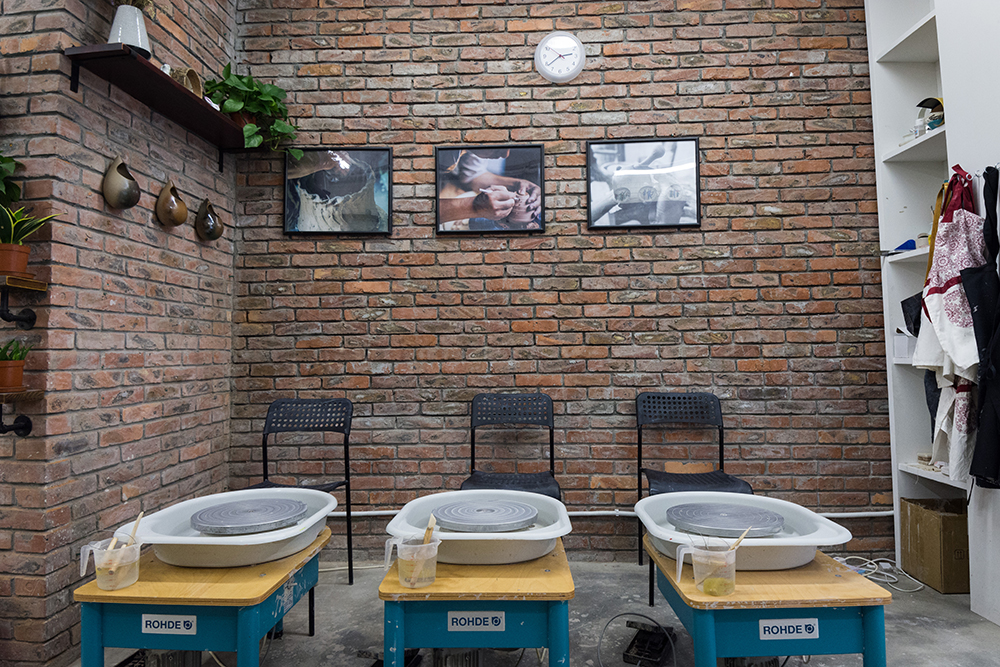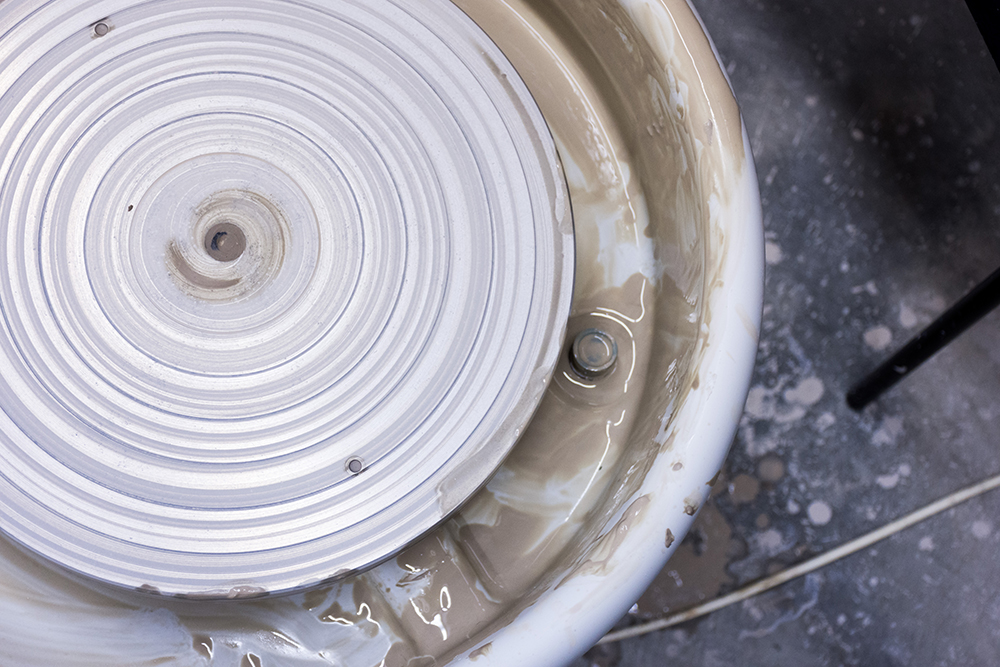NEWS & EVENTS > INTERVIEW
"A nation's culture resides in the hearts and in the soul of its people"
-Mahatma Ghandi
Amber Lei — Tung Yao Ceramics Design Studio
August 2017
August 2017
How do you think traditional ceramic art can be passed on to future generations?
I don’t think we can continue to use old methods of the past to pass on the art. When I was in Jingdezhen, I saw that people in Jingdezhen were divided into two schools of thought. One is the traditional school, while the other is the new school. The two groups never communicate with each other. Even though the artists from the new school are very talented, the traditional school do not think that the work of these new artists can surpass the art of old. As for the new school, they refuse to learn traditional ways, thinking it is old-fashioned. The connection between the two schools is broken. They both do not accept each other’s opinions and practices. In the beginning they did try to listen to each other, but soon problems and dissension appeared. In fact, this problem also appears in our daily life. Youngsters always question the older generation. But after twenty or thirty years, they will start to look back and cherish traditional things and values. This is human nature. Therefore, the people who are willing to be the protector or inheritors of the traditions are mostly thirty or forty years old or even fifty or sixty.
If you ask me whether there is a standard way to pass the traditions on, my answer would be no. We can only wait until people come to a realization themselves. Maybe there is someone who has the lucky opportunity to learn traditional techniques, but then the person may decide to keep the skills for his or her own family instead of sharing it with the public. These individual examples may affect the inheritance of traditional techniques, therefore there is no standard nor stable way to pass on the traditions. The government sometimes holds workshops for the public to learn more about traditional techniques. But this is only effective if there are people who are willing to proactively learning about these traditions and who understand their importance. So my point is that we need to go back to basics, and that we should promote people’s interest in ceramic arts starting from when they are kids. Unless one is especially talented, success otherwise depends on education from a young age. For example, we should teach children to understand what ceramics is when they are in kindergarten or primary school. The workshops we hold in our studio are mostly targeted towards children. We want to let them realize the road to ceramic arts is not easy. There are a lot of skills and techniques they will need to learn. Besides raising interest in ceramic arts from a young age, education is also important. But still, even if there are many workshops for the public to learn traditional skills, the outcome still depends on the learners themselves.
To summarize it simply, I think there is no effective way to pass on traditional handicraft, except for cultivating interest and talent from a young age or learning more about ceramic art from a young age—it is only then that there will be a chance of the art being passed on. Museums and government advertisements are trying to tell people to protect traditional cultural heritage, but most people do not understand why such traditions need to be protected, or are worth protecting. They know the general concept of protecting cultural heritages, but don’t understand the reasons for it. This makes it hard to protect transmission of knowledge.
I don’t think we can continue to use old methods of the past to pass on the art. When I was in Jingdezhen, I saw that people in Jingdezhen were divided into two schools of thought. One is the traditional school, while the other is the new school. The two groups never communicate with each other. Even though the artists from the new school are very talented, the traditional school do not think that the work of these new artists can surpass the art of old. As for the new school, they refuse to learn traditional ways, thinking it is old-fashioned. The connection between the two schools is broken. They both do not accept each other’s opinions and practices. In the beginning they did try to listen to each other, but soon problems and dissension appeared. In fact, this problem also appears in our daily life. Youngsters always question the older generation. But after twenty or thirty years, they will start to look back and cherish traditional things and values. This is human nature. Therefore, the people who are willing to be the protector or inheritors of the traditions are mostly thirty or forty years old or even fifty or sixty.
If you ask me whether there is a standard way to pass the traditions on, my answer would be no. We can only wait until people come to a realization themselves. Maybe there is someone who has the lucky opportunity to learn traditional techniques, but then the person may decide to keep the skills for his or her own family instead of sharing it with the public. These individual examples may affect the inheritance of traditional techniques, therefore there is no standard nor stable way to pass on the traditions. The government sometimes holds workshops for the public to learn more about traditional techniques. But this is only effective if there are people who are willing to proactively learning about these traditions and who understand their importance. So my point is that we need to go back to basics, and that we should promote people’s interest in ceramic arts starting from when they are kids. Unless one is especially talented, success otherwise depends on education from a young age. For example, we should teach children to understand what ceramics is when they are in kindergarten or primary school. The workshops we hold in our studio are mostly targeted towards children. We want to let them realize the road to ceramic arts is not easy. There are a lot of skills and techniques they will need to learn. Besides raising interest in ceramic arts from a young age, education is also important. But still, even if there are many workshops for the public to learn traditional skills, the outcome still depends on the learners themselves.
To summarize it simply, I think there is no effective way to pass on traditional handicraft, except for cultivating interest and talent from a young age or learning more about ceramic art from a young age—it is only then that there will be a chance of the art being passed on. Museums and government advertisements are trying to tell people to protect traditional cultural heritage, but most people do not understand why such traditions need to be protected, or are worth protecting. They know the general concept of protecting cultural heritages, but don’t understand the reasons for it. This makes it hard to protect transmission of knowledge.
About Amber Lei:
Amber is the founder and director of Tung Yao Ceramics Design Studio. Amber developed a love for ceramics at a young age and has been practicing for over 10 years. In 2015, she graduated with a BA in Ceramics from Cardiff Metropolitan Art & Design University, and has participated in group and individual exhibitions. She has also helped Cardiff Metropolitan Art & Design University to set up a ceramics exchange program with Jingdezhen ceramics institution.
About Tung Yao:
Tung Yao Ceramics is a ceramics platform, designed for ceramics lovers, artists of different fields and the public, aiming to promote ceramics arts and facilitate project collaboration and experience sharing. In the hope of bringing ceramics into life, Tung Yao Ceramics is dedicated to make ceramics arts more lively and popular by organizing various pottery workshops and educational tour to Jingdezhen. With its own studios and production equipment, Tung Yao Ceramics produces its unique product design and collaborates with different brands and ceramic artists through different exhibitions to deepen the public understanding about ceramics through different channels.,
www.tungyaoceramics.com/about
www.tungyaoceramics.com/about


